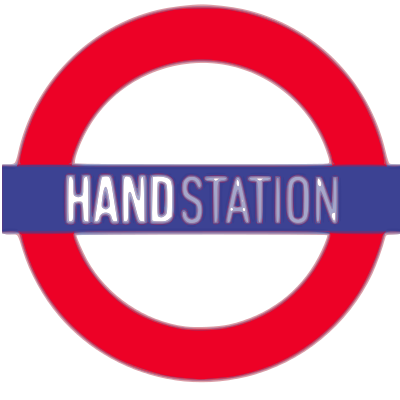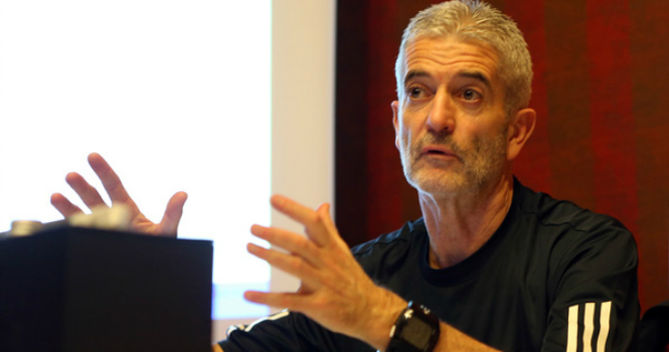Last week the IHF made an official start to the new ruling modifying five regulations starting in July before this news it’s going to be obligatory speak with an authorised voice like Ramón Gallego, member of the commission of rules and regulations of the IHF.
Before I go into matter I’d like to know what’s the process is to go ahead with the modifications of this type I can understand that it won’t be in two days.
These changes have taken 3 years of work. The rules and regulations of 2010 even before 2011 and 2012 the IHF had taken out regulation already written down. And in 2013 started to work possible changes in the regulation of 2016 or 2017. That is without a specific date when to apply. In 2014 the IHF celebrated a forum of specialist in Denmark where they analyzed a lot of things like marketing, and television ….., And where the met top trainers from around the world to know what they thought of them and to know in first hand what to do. For example we count on Icelandic selector, the one from Sweden, and the one from Denmark, Hungarian and polish and a few more. Valero Rivera was invited, but couldn’t go.
That is to say, for rules like these get the approval of several first class trainers that you can count on.
So that’s why when I hear a critical voice I always say: to surfers. This is consensual with these people, that haven’t arrived in this world. Sometimes it’s necessary some moderation, because they are throwing stones against their own roof. We have a clear idea that the trainers are the ones that know how to play handball, we are not going to say to the experts in arbitration, we’ve got to analyze the problems that can come out and apply the rules. It’s very clear the people who have to know how to play is the coaches.
And so to be clear, What steps must be taken to make the changes of these kind? I supposed a study to detect possible dysfunctions, Consulting the experts, try and apply. Am I missing out on anything?
On the evidence from last summer’s competition the world cup junior and youth level. We are talking about 180 games of high standard. The intention was using the event in the Denmark’s world cup, but in the end they didn’t do it, because a lot of teams said no about training enough Some teams made a protest because they didn’t have time and the IHF preferred not to introduced them. At personal level I think it’s an error because the rules were being applied just the same and now in the first tournament will be the Olympic Games.
From the IHF they understand that EHF they introduce the European Cup 2016?
No, the rules take a very strict process which can’t be jumped. They have approved in November in the IHF congress which was celebrated in Sochi. From then on the deadlines start on the 1 st of March and were publicized on the 1 st of July enter into force. Before that date nobody can use them except in an IHF competition or those that applied for before the celebration of the congress. For example Germany made a request of the rule 30 seconds in the league and the Icelandic league asked for the rule of 7 players and no goalkeeper.
At a personal level, after all these changes, Are you satisfied? Do you consider further steps are needed for our sport?
I’m the responsible person for this small group of experts of the IHF and which I’m the coordinator of the group, I can be satisfied. Apart from that, I’m satisfied for all the work that I’ve done since 2013. This isn’t a fantasy idea that can occur to anybody.
Finally, before I review the rules. What aspects of the game can work from now on? Or where have they worked these years But not centred in any modification?
Let’s see, maybe it’s early. But for example the disciplinary topic the rules are perfectly explained but the defence over the pivot we are losing control. Above continental competitions. Before the Olympic Games we are going to influence on it. The rule is very clear, you can’t grab, push, bite…….. Lately we are seeing actions that look like rugby or wrestling. In this aspect I think that we saw a European match too hard. Handball is hard, you fight, but the actions have to be cut off. Facing the games we are going to make a special impact in that and if we don’t gain we must call a meeting, to see what each other want and take decisions.
Maybe we have to talk about technical decisions like attack faults. That is to say, very technical questions. There are ways to see things clear, because, they don’t apply or if they change into something. The next forum will be in 2017 or 2018 we’ll talk about it. We will talk to the coaches about these decisions.
Finally we are open to all kind of changes speciality important ones I don’t believe this in a near future. Also at this time we talk about several possibilities in which there was no agreement. For example, divide the game in 4 rounds instead 2, make changes in the time out period. But there isn’t an agreement about that.
Now we will centralize and analyze all the changes. Starting for example with the passive game. Since some years back it’s been on the on the table. A lot of coaches have claimed in reducing subjectivity pointing out these actions and with these rules you can gain a lot. During these last years they have had a lot of headaches in the passive play in handball?
If because the coaches were very clear. They told us before lift their hand up they wouldn’t notice a lot of problems. In general terms the problem was there after the signal, especially in the qualifying round in the double game. Even if the game was well explained it’s true that there was a problem. Even myself I’ve got angry watching games. We have said about creating a criteria and objective which is talking about 6 passes. I told them if they were sure, because the rule is still a free kick or defensive blockade, but they left it very clear, that it was the coaches problem and the opposite team, they should find solutions about it. Evan so we say try in the youth world cup with a rule of between 5 and 8. Later we did a chart and the coaches didn’t make any mistakes. 95% of the cases didn’t overcome 6 passes.
Now you’ve got to coordinate. The referee can whistle at any moment that won’t change. It depends on the attitude of the counterpart. On the other hand like up to now a lot more accurate, It’s not permitted that the defining team rise the aggressiveness when the referee puts his hand up. The attacking team can only give 6 passes and we can’t allow any free kicks that is going to be the referees have to open their eyes and not permit this kind of aggravation specially in the destruction of the other team counter attack based on continuous faults.
With the experience of Brazil and Russia I’m very illusion with this ruling also I say to the referees that they will benefit from it.
With the change of rules and the situation where the team can use the goalkeeper as well as a player personally I think that on the behave of the IHF they have demonstrated a quicker game. 10 year ago this technique wasn’t in use. What are the basic objectives in this modification?
Two things. First of all we are looking at the chest guard which most of the teams use it, it’s really ridiculous. I’m talking about the elite, apparently a cadet team would use it, but not a team of first level. Now the rule is that how it is supposed to be worn and it is going to be very strict. On the other hand we appreciate apart from any exception the majority of teams will use them extend the attack, we’ll put that player in one extreme near the changing zone and after two passes the player will change. Now the coaches will be able to change up to seven players and all players participate in the same way, they would be as dangerous because anybody can change. It’s a great advantage for whom uses it. Apparently there is always a risk and if you can’t make a change with the goalkeeper non of the players can enter the goal area that is to say, that the team which defends has to work in a tactical way so that the team can’t introduce the goal keeper on the track.
I can’t see why some teams like the Spanish one still against this rule, which was accepted by an 85% of the experts consulted. Is this going to change the essence of handball? We’ve got to be open to the future this will give variables to the game. Then there is the decision in doing it or not.
Since we have known the new regulations maybe the controversial regulations was the injury ones which means that a player who has to be attended on the track has to dock the next three attacks.
Yes or no. That is to say, If there is people that will criticise as a result of an agreement see this ruling has 3 objectives. The first one, the cheaters they try to cut the pace of the game or to sanction the opponents out of the game. Secondly don’t beak the game we need to give a good and positive example to the game. Situations of pulling out quickly, situations of the game which are not cut out of this way. This way of playing it makes a difference with other sports and we have to exploit it. We‘ve got one hour, but very intense. And the third objective is a question of health, the players have to be looked after they aren’t circus animals Sometimes they hurt themselves and the players have to rest a short time in the dock. For example, when a goalkeeper receives a hit in the face we receive like something normal it’s quite generalized in some cases they even feel better after it .Wouldn’t it be better that he went to the dock for a couple of minutes and make sure that he is alright? Even though I don’t agree when he has to be attended with a hit in the face by a ball he could carry on with the game.
And also they say that it’s no fair this ruling because it harm he who receive the hit in the face. But that is not like that there are exceptions which are taken into account. If the culprit is sanctioned the player that who received the hit shouldn’t go to the dock even if the medical team has to go to the track to attend him. We should know that it’s somebody’s fault and we are not going punish twice who receive the hit in the face.
In the last season you have noticed a large considerable amount of simulation?
I don’t know if it is rising because for along time. What I do know is that you see more leagues and in other continents. Although me and the coaches what we our worried about is the beak up of the speed of the game. What you can’t do is if a male or female player falls to the ground and is attended 2 or 3 minutes and after carries on playing you can’t stop the game for just that.
Depending on how the game goes Could three attacks be enough time?
No, depending on the game if it is 4 minutes or 1 minute. But by the evidence that we have done this doesn’t happen many times and in the last two tournaments there weren’t no problems. We have seen in the worst of cases 3 attacks 3 and a half minute duration we saw in the junior world cup of Brazil, in 90 games half of the games the medics were called in 1’5 times per game. We can say that if the player was in attacking positions he would be the first. The person in charge to count the 3 attacks would be the delegation whereby I don’t care if in those competitions they apply where there is delegation.
As for the standard 30 seconds, was the request of the coaches?
The coaches told us that one minute was to much time in a minute a lot of things can happen, and in 30 seconds would be better. And then another problem of motive that’s why introduced this in 2010 which hasn’t been accomplished yet. trying to find in the last couple of minutes aggressive actions an the team is starting to lose trying to maintain a possibility of a tie break. The criteria doesn’t change with respect to the regulations in force, The only difference is that the place to signal a free kick will be 7 meters. After a few examples that we could see was in the tournaments last summer we were very pleased. I agree to the new regulations.
And lastly we have the blue card, which really hasn’t got much influence on the game.
If the blue card is administrative one. It helps to understand the situations in the game and know a determined action will be written down. In 2010, when we made the change in the regulations we thought everything was clear but we found the problem facing the general public and the press. With the blue card you can solve it. When a referee shows a red card and then a blue one that player won’t play the next game.
Edu Agulló | @Eduagullo


